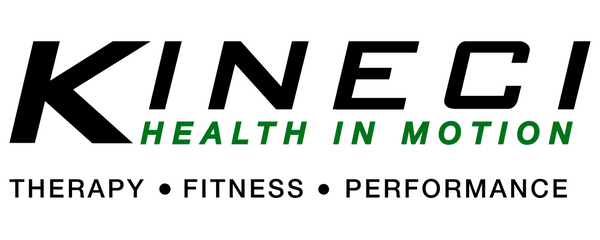
Move Better, Live Better: Understanding Your Neck, Shoulder, and Hip Health
Neck pain, shoulder tension, and hip discomfort might start small, but they can quickly interfere with your work, workouts, and quality of life. These aren’t isolated issues: they’re deeply connected through your body’s structure and movement patterns. At Kineci Health In Motion, we take a whole-body approach, understanding how your muscles, joints, and nervous system work together so you can move freely and live pain-free.
The Neck: Your Body’s Balancing Act
Your neck has one of the most demanding jobs in the body: supporting the weight of your head all day long. With seven small vertebrae stacked above your thoracic spine and a network of muscles that tie into your shoulders and upper back, the neck relies on balance, posture, and mobility to function properly.
When your upper back becomes stiff from sitting or looking down at screens, extra stress builds in the neck. Over time this leads to tension, headaches, and even shoulder pain. Deep postural muscles in the neck also play a critical role. They keep you upright and stable against gravity, but can weaken after trauma, whiplash, or concussion…creating a chain reaction of tightness and imbalance.
A strong, flexible neck depends on healthy movement through the shoulders and upper back. Improving posture, mobility, and muscle coordination across these regions is key to lasting relief.
The Shoulder: Stability Meets Mobility
Your shoulders are the most mobile joints in your body, allowing you to lift, throw, reach, and express yourself through movement. But that freedom comes with a cost: less built-in stability. The shoulder’s shallow ball-and-socket design relies heavily on muscles and control from surrounding areas like the shoulder blades and upper back.
When your shoulder blades become stiff or “stuck,” your arms can’t move freely, creating tension and discomfort. Many shoulder issues also stem from poor hip and core mechanics. Think of your body as an integrated machine, when one part moves poorly, another must overcompensate. For example, a lack of hip rotation can put excessive strain on your shoulders during daily activities or sports.
Restoring shoulder health means improving mobility in your upper back and shoulder blades while strengthening the muscles that stabilize the joint.
The Hip: The Center of Motion
Your hips are the foundation of movement. They generate power for walking, lifting, running, and nearly every functional motion you perform. When your hips are strong and mobile, the rest of your body moves efficiently. When they’re restricted, you start to feel it everywhere…especially in your lower back and knees.
Because the hips and spine are so closely linked, pain in one often influences the other. When the body senses instability in the low back, it tightens surrounding hip muscles as protection. This “muscle guarding” limits motion and fuels more discomfort.
The hip is designed to move forward and back, side to side, and rotate. Losing range of motion in any of these directions can throw off balance, create tension, and affect posture. Restoring proper hip mobility and stability is a cornerstone of long-term movement health.
How the Neck, Shoulder, and Hips are linked
Your body is an integrated system. All parts are connected and all parts contribute to the success of the other parts. When the brain chooses a task to perform whether it is reaching up to change a light bulb, catching a ball, picking up the pet’s food bowl, or playing Pickle ball, your body coordinates the movements of your neck, shoulders, and hips to get the job done.
When your hand wants to reach someplace in space your eyes need to track to the target item. This means your neck must accurately position your head to allow your eyes to see the target. Your hips need to move to position your body in the right place for your hand to get where it needs to go. And your shoulders need to position your arm and hand accurately to reach the target item. All of the body parts must work coordinated in an integrated fashion as ‘friends’ to successfully complete the task.
If any one body part is not doing its fair share of the work, stress and strain will show up in other parts. The ‘friends’ will need to pick up the slack to get the job done but at the cost of strain and pain.
Treating your body as an integrated whole system matches how it actually works in real life function.
Why the Kineci Approach Works
At Kineci Health In Motion, we believe lasting relief comes from understanding your body as a system, not treating symptoms in isolation. We assess how your joints, muscles, and movement patterns work together to create balance and strength.
Our approach helps you:
-
Fix the root cause instead of masking pain with short-term solutions.
-
Treat the integrated whole body instead of isolated painful parts.
-
Avoid unnecessary interventions like surgery, injections, and medication.
-
Learn how to move better through personalized strategies that strengthen and restore your natural alignment.
You deserve to feel better, move easier, and live stronger. Schedule a Free Assessment today to start addressing the source, not just the symptoms.
